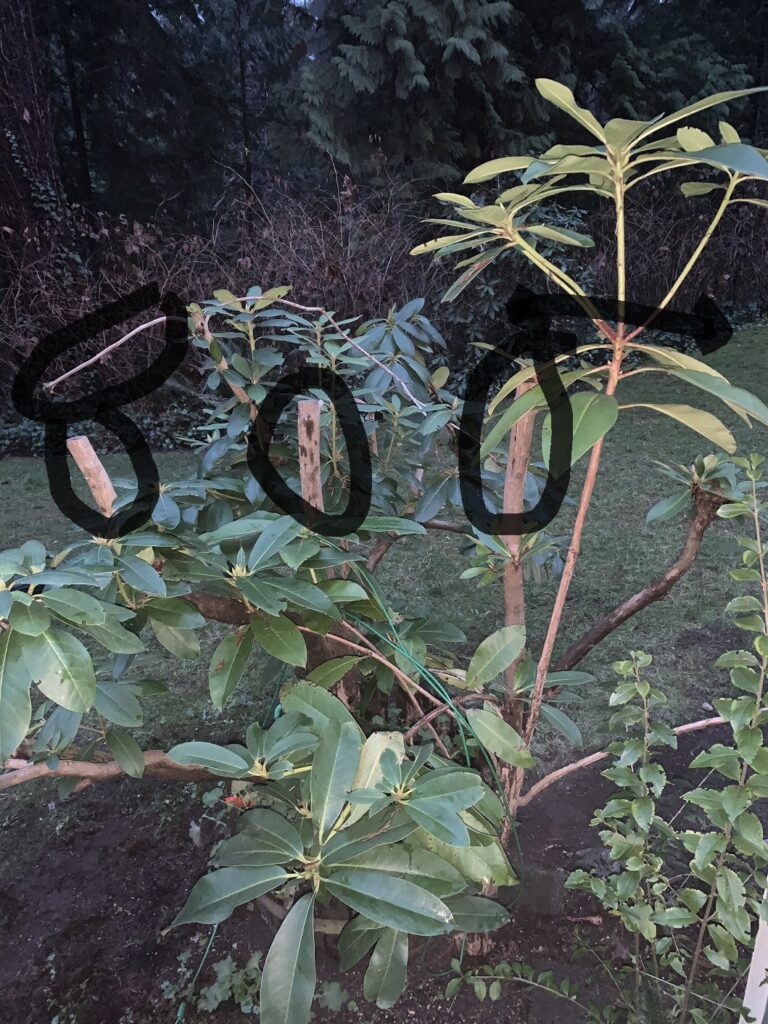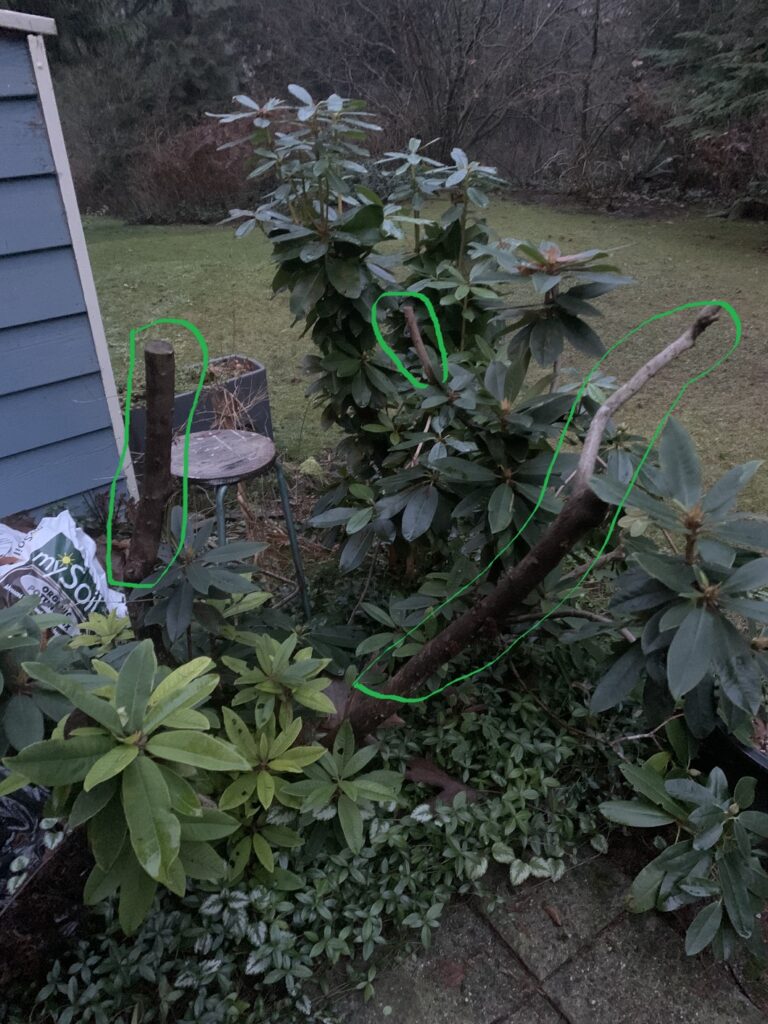Rhododendron reduction
What do you do when your rhododendrons get too big? You can reduce them with your hand saw and hope the shrubs recover. That’s what happened at one strata (multi-family) site where the residents wanted their rhododendron significantly reduced.
So grab a sharp hand saw and get to work. But before you do, remember one rule: rough-barked specimens recover better than smooth-barked specimens. Luckily, in my case, the shrubs were rough-barked.
Latent buds
Rhododendron reduction works because the shrubs have latent buds hiding under the bark. Once you reduce your shrub these buds start emerging and popping. You just have to be patient. Once, I reduced a client’s rhododendron so hard, the lady wasn’t exactly happy. I told her the shrub would recover nicely and I was right. It just took way longer than I expected.
Now back to our strata example.
Follow-up visit
Months later I showed up on site and went to see the rhododendrons just as daylight was fading fast. Clearly the latent buds I had seen popping months earlier were now fully grown and showing buds. Those buds are set for next summer so don’t touch them in December.
One problem
I did notice one problem. There were several large stems without any buds or growth. It’s as if there were no latent buds anywhere, which is weird. I have no idea why the odd stem is bare, looking like a stick.
The fix is obvious: follow the bare stem to the next green growth and remove it just above it so the “stick” doesn’t show anymore. If the entire branch is bare then we’ll remove right at the base. As if we were coppicing it.
This will give us the look we want: a green rhododendron shrub, nicely reduced by more than half. Now to keep it at that height, we’ll diligently remove each season’s new growth.


Conclusion
Yes, you can reduce your rhododendrons significantly thanks to latent buds hiding under the bark. Just remember that rough-barked specimens recover better than smooth-barked specimens. If you get branch sections totally devoid of any growth and poking out like “sticks”, just remove them with a sharp hand saw.




